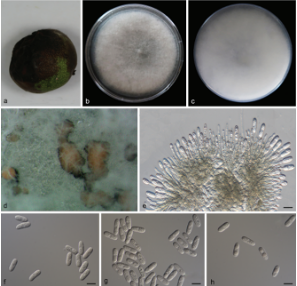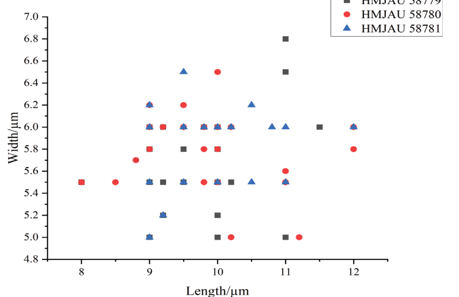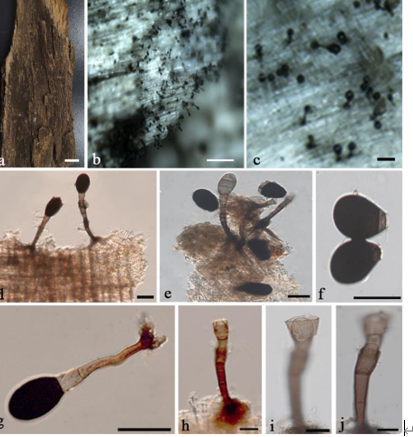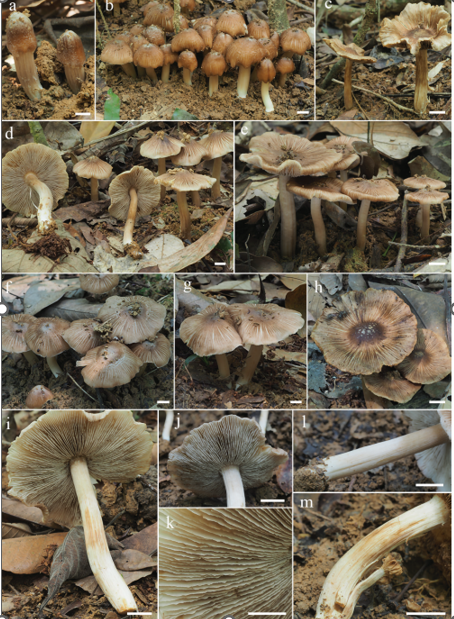Amanita pseudosychnopyramis Yang Y. Cui, Qing Cai & Zhu L. Yang, sp. nov. 2020
Index Fungorum number: IF551334; Facesoffungi number: FoF00897
Holotype: CHINA, Guangdong Province, Fengkai County, Heishiding, Fagaceae (altitude 500 m), 20 March 2012, F. Li 66 (HKAS 78417); the same location, Fagaceae (altitude 320 m), 16 March 2014, F. Li 1593 (HKAS 82293); Yunnan Province, Jinghong City, Dadugang Township, Fagaceae (altitude ca. 1000 m), 30 June 2014, K. Zhao 467 (HKAS 87999, holotype!).
Morphological description
Basidiomata small to medium-sized. Pileus 4–7 cm in diam., plano-convex to plane, often slightly depressed at center, at first yellow (3A4–8) over disk, then yellowish brown (3B2–8) to brownish (3C4–7) at center, becoming yellowish (3A2–3, 3B2–4) to dirty white (3B1–2) toward margin, viscid when moist; margin tuberculate-striate (0.25–0.3R), nonappendiculate; volval remnants as conical, subconical to pyramid, dirty white to grayish (3B1–2) to brownish grey (3A2– 4; 3B2–3), randomly arranged, small warts; trama white (1A1), unchanging. Lamellae free, white (1A1), crowded; lamellulae truncate, plentiful, evenly distributed. Stipe 6– 8.5×0.3–0.8 cm, subcylindric or slightly tapering upward, with apex slightly expanded, dirty white (3A1–3) to yellowish brown (4A2–3, much paler than 4B2–3), subglabrous or covered with white (1A1) floccose squamules; context white, hollow in center; basal bulb subglobose to long ellipsoid, 1–1.3 cm in diam., white (1A1) to dirty white (3A1–3), upper part covered with conical to subconical to granular grayish to brownish grey volval remnants arranged in several incomplete rings, usually forming a short limbate collar between the stipe and the bulb. Annulus present, superior, pendant from attachment 2–3 cm below apex of stipe, white (1A1), thin, membranous, fragile. Odour indistinct.
Habitat: in southern subtropical forests of Fagaceae.
Distribution: southweatern and southern China
GenBank Accession:
Notes: Amanita pseudosychnopyramis is characterized by its conical to pyramid grey to brownish grey volval remnants on the pileus, a basal bulb with a short limbate collar and its subglobose to broadly ellipsoid basidiospores (8.5–10×7.5– 8.5 μm). It is associated with subtropical forests dominated by Fagaceae.
Reference: Hiran A. Ariyawansa1,3 & Kevin D. Hyde1,2,3,15 & Subashini C. Jayasiri1,3 et al.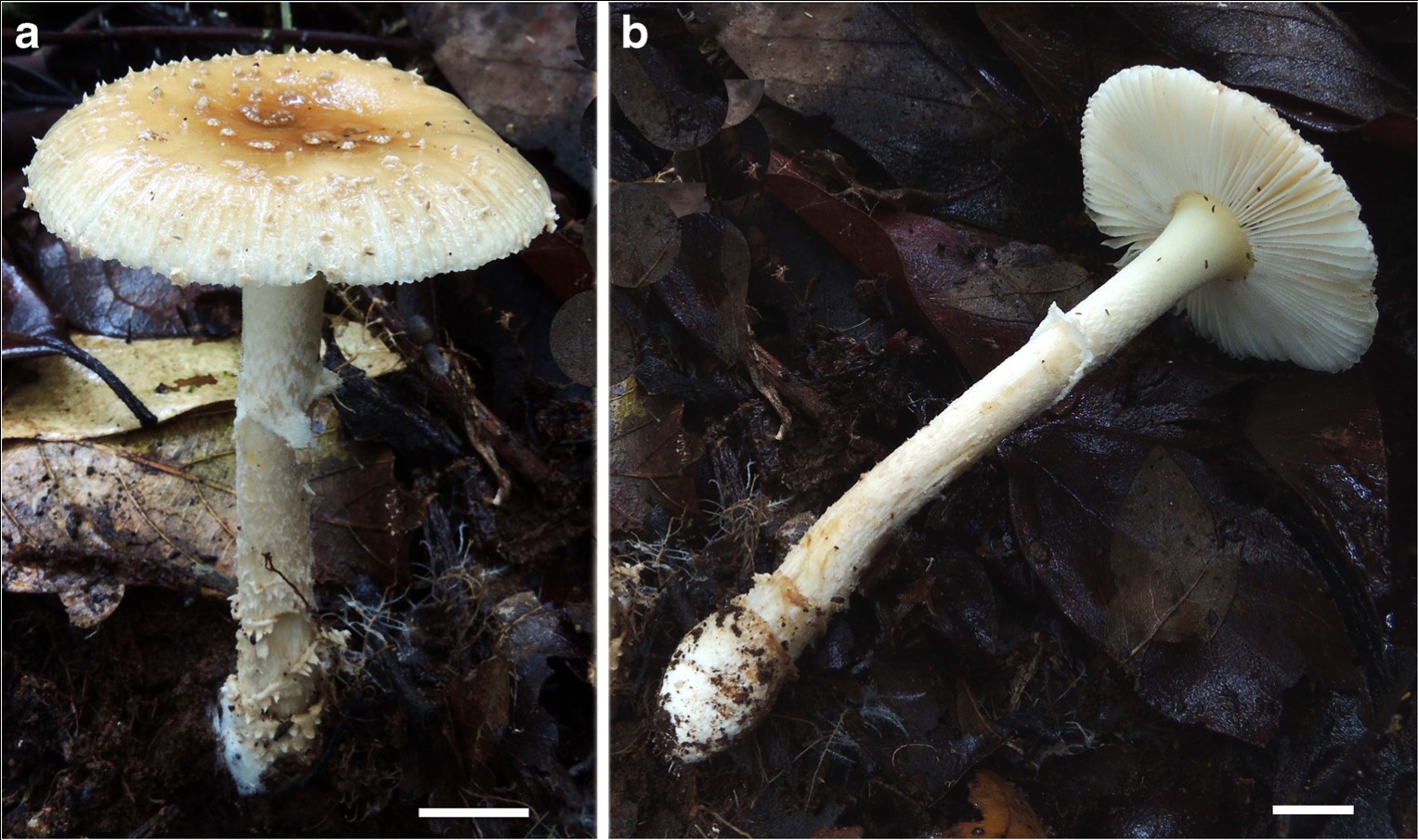
Basidiomata of Amanita pseudosychnopyramis (HKAS 87999, holotype). Scale bars=1 cm


